If you put so much effort and time into creating social media content, understanding and measuring your efforts' impact is also important. That's where the engagement rate comes into play – it helps you gauge how well people are interacting with your content.
But, calculating this seemingly straightforward metric can be confusing. Its varying definitions often leave marketers feeling lost and uncertain about measuring social media engagement accurately.
This hurdle often leaves social media marketers searching endlessly for a reliable and comprehensive method to calculate social media engagement rate.
Today, your search ends here as we provide you with a clear and actionable framework to measure your social media engagement accurately.
So, grab a cup of ☕, and let's get started.
Table Of Contents
- What Is The Social Media Engagement Rate?
- What Is The Significance Of Engagement Rate On Social Media?
- What Is A Good Social Media Engagement Rate?
- 3 Engagement Rate Formulas With Their Pros And Cons
- How To Calculate The Social Media Engagement Rate (Platform Wise)?
- How To Calculate The Social Media Engagement Rate Automatically?
- Closing Note!
- FAQs (Frequently Asked Questions)
You can directly jump to a section of your choice or keep scrolling.
What Is The Social Media Engagement Rate?
The social media engagement rate is a valuable metric that measures the level of audience interaction with your brand on social media platforms.
It reflects the percentage of interactions your content receives, encompassing actions like likes, comments, shares, and mentions. This metric provides insights into the engagement and involvement of your audience with your brand's social media presence.
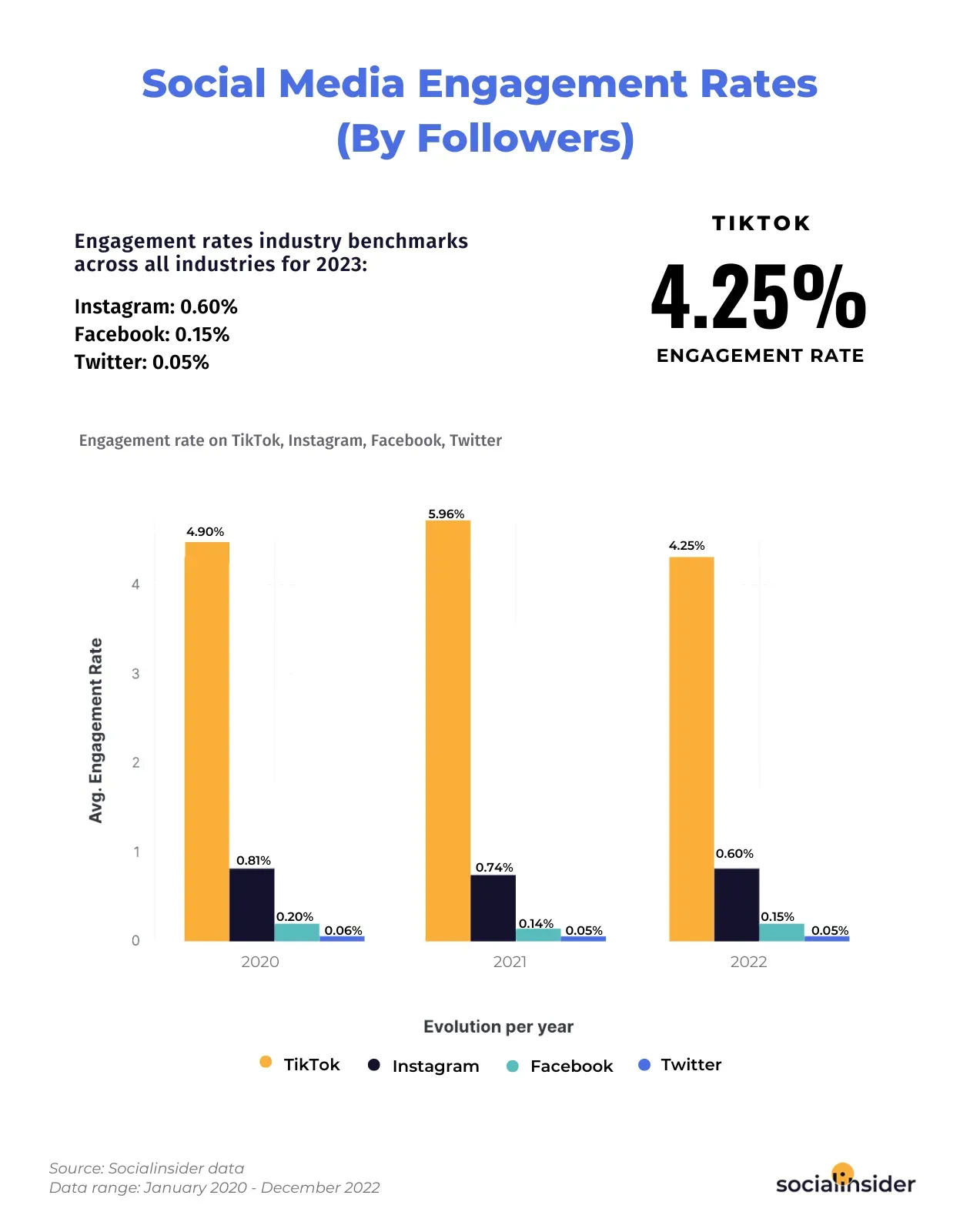
What Is The Significance Of Engagement Rate On Social Media?
By understanding the significance of engagement rate, brands can leverage social media marketing to connect with their audience, strengthen their brand image, expand reach, and establish credibility within their industry.
Understanding Your Audience
The engagement rate provides insights into your target audience's interest in your brand content. Interactions received on your posts indicate whether you are effectively connecting with your audience. It helps identify if your content resonates with your target audience's preferences or not.
Enhancing Brand Image
Your interaction with your target audience on social media reflects your overall brand image. A high engagement rate signifies a strong connection between your target audience and your brand. For new brands, engagement helps to shape your brand perspective in your target audience's mind.
Expanding Brand Reach
The engagement rate has a ripple effect on other metrics. A higher engagement rate allows you to expand your brand reach, reaching a larger audience. The increased visibility can lead to greater ROI and business growth.
Establishing Brand Credibility
Engaging users with compelling content contributes to building brand credibility. Prompt responses and conversational interactions help establish brand authority in your niche, enhancing trust and credibility among your audience.
What Is A Good Social Media Engagement Rate?
The ideal engagement rate on different social media platforms can vary depending on factors such as industry, content type, and more. But as a general guideline, a good social media engagement rate is typically considered to be above 1%.
What Is A Good Engagement Rate On TikTok?
Sources indicate that the average organic engagement rate for brands on TikTok is around 17.5%, which is 15% higher than the average engagement rate on Instagram. TikTok's ability to make users feel good, excited, and creatively expressive contributes to its high engagement levels. If your brand can tap into this energy, it could be a fantastic platform to focus your efforts on.
It's worth noting that TikTok has registered an average engagement rate decrease of 28% from year to year.
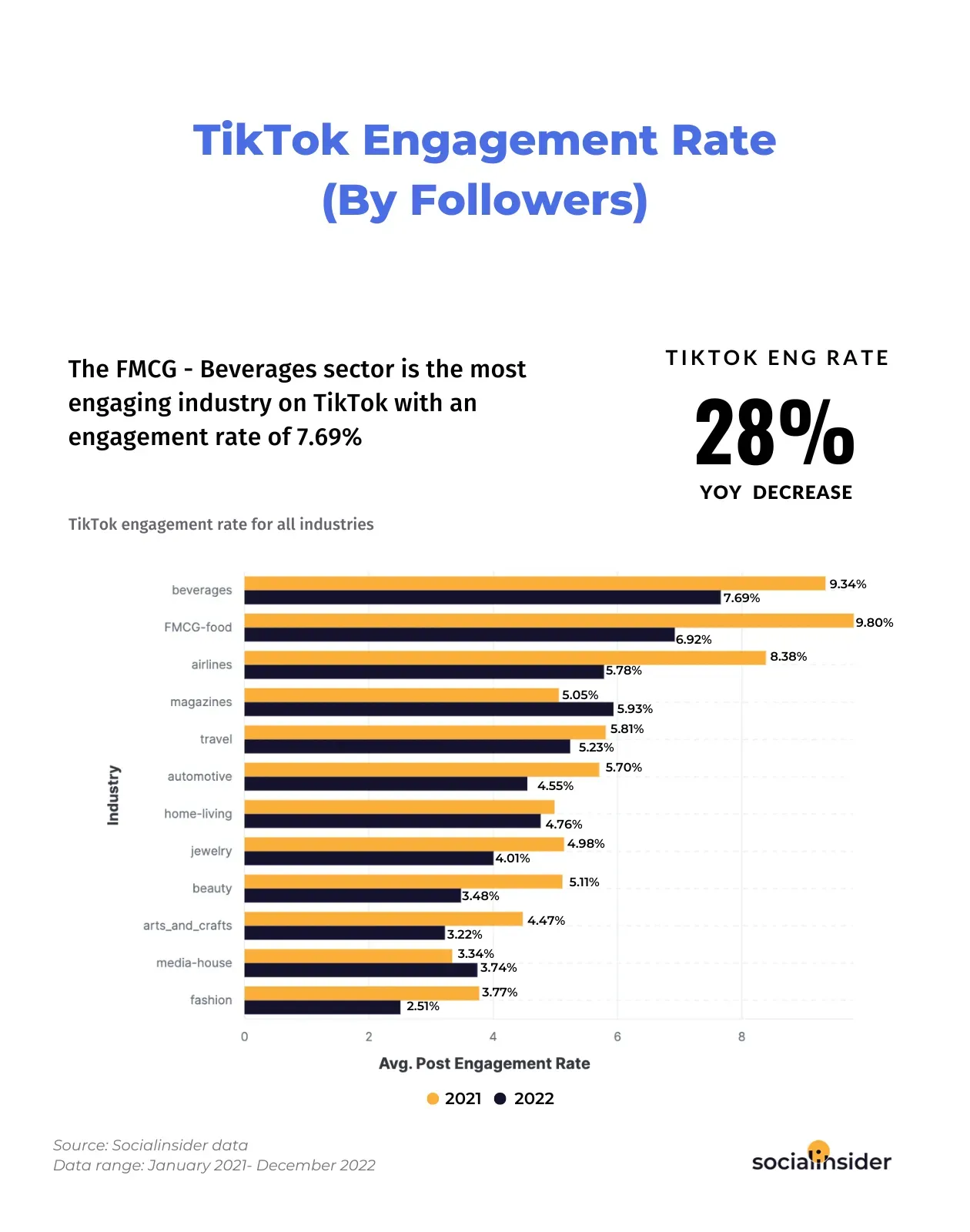
What Is A Good Engagement Rate On Facebook?
Socialinsider suggests that the average Facebook engagement rate across all industries is 0.15%.
However, Rival IQ's benchmark report suggests that a good engagement rate can go as low as 0.064%. By analyzing the performance of your top-performing content against this calculation, you can identify best practices and apply them to your Facebook social media strategy to meet this benchmark.
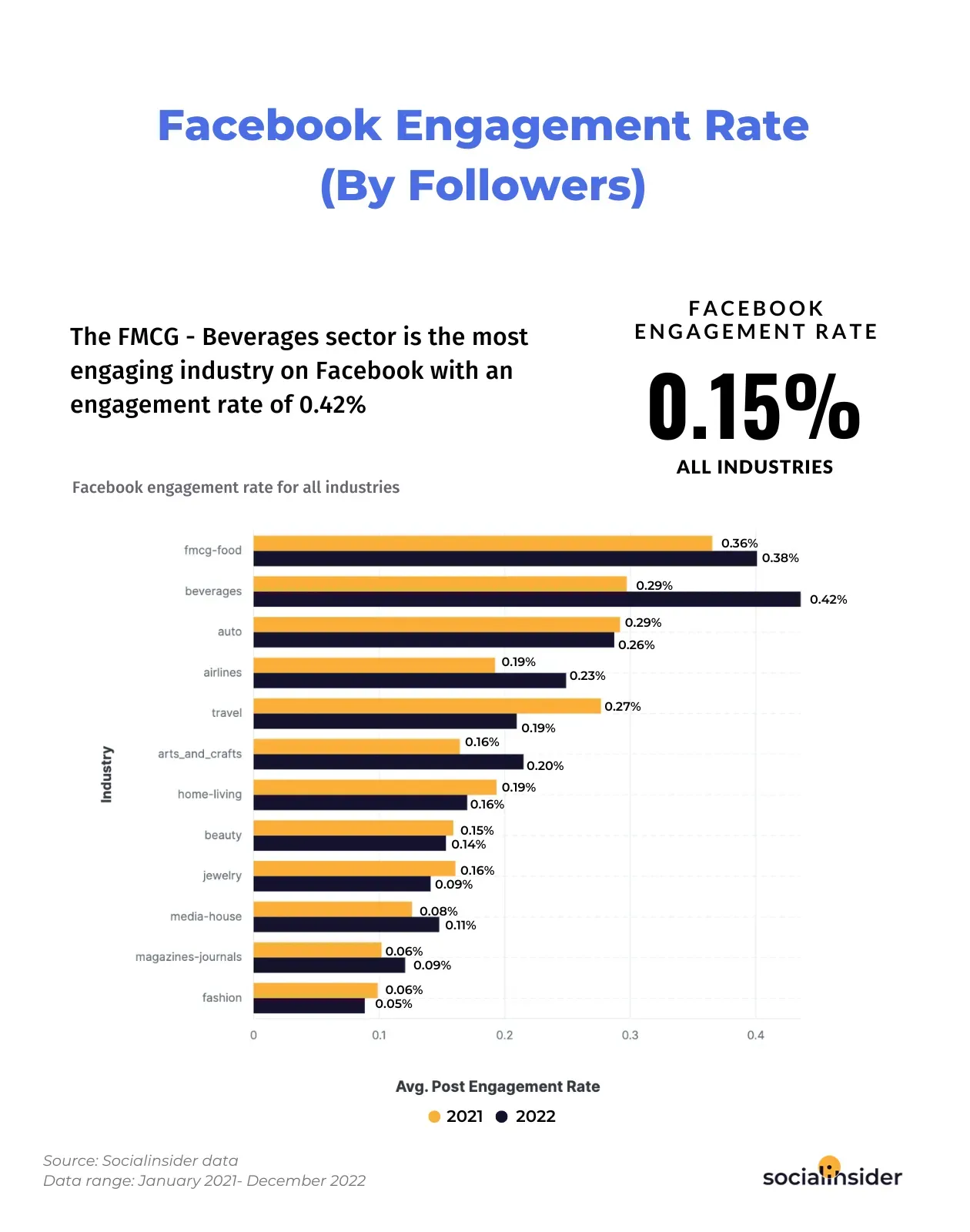
Know more: 11 Certain Ways To Increase Engagement On Facebook
What Is A Good Engagement Rate On Twitter?
When it comes to Twitter, a 0.037% engagement rate is considered good, and anything above 0.098% is great. The average engagement rate across all industries is 0.05%.
Hashtags play a significant role in boosting engagement rates on Twitter since the platform is designed for content discovery, and users regularly explore content through hashtags.
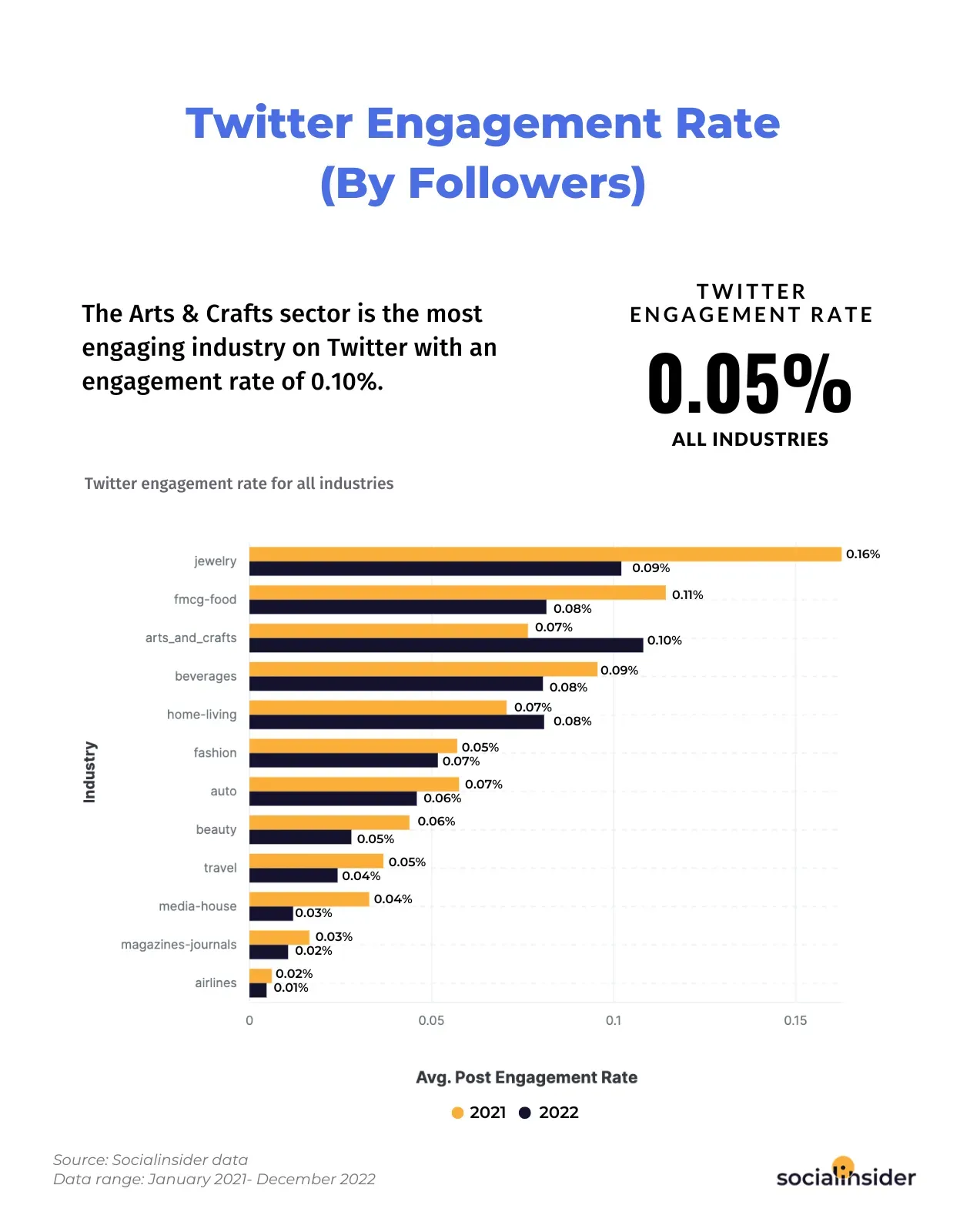
3 Engagement Rate Formulas With Their Pros And Cons
Engagement Per Follower
Calculating engagement per follower or fan is a straightforward method that works well even when reach information is unavailable. However, it's important to note that the reach of a post can extend beyond the follower base if it goes viral, which can affect the validity of this calculation.
Pros
- Easy to calculate, even when reach information is unavailable.
- Provides a clear understanding of the engagement generated from the existing follower base.
- Helps assess the level of interaction and interest among followers.
Cons
- Can be misleading if a post goes viral, as the reach of a post can extend beyond the follower base.
- Can be less accurate for accounts with a large number of followers.
- Does not consider the potential reach beyond the follower base.
- May not accurately reflect the overall impact of the content if the engagement is concentrated among a small subset of followers.
Engagement Per Reach
Measuring engagement per individual who potentially saw the post is useful for assessing post quality. However, this metric may not provide an accurate reflection of performance since it doesn't distinguish between posts with similar engagement rates but varying reach.
Pros
- Helps assess the quality and effectiveness of a post in capturing the attention of the target audience.
- Provides insights into the engagement generated per individual who potentially saw the post.
- Allows for comparisons between different posts in terms of their ability to engage the intended audience.
Cons
- Does not differentiate between posts with similar engagement rates but varying reach.
- May provide a skewed view of performance if the reach is low or limited.
- Does not account for the potential impact beyond the reach, such as when a post is shared or goes viral.
Engagement Per Impression
Calculating engagement per impression represents the engagement per view. Since people generally don't engage with the same post multiple times, using engagement/reach is typically more effective in assessing post-performance. However, there may be cases where measuring engagement at the impression level is necessary, such as in CPM-priced paid campaigns.
Pros
- Reflects the engagement per view, providing insights into the level of interaction with the content.
- Useful for evaluating the efficiency of impression-based campaigns, such as CPM-priced paid campaigns.
- Helps understand the engagement generated relative to the number of times the content was viewed.
Cons
- Does not account for multiple engagements by the same individual on a particular post.
- May not be as relevant when assessing overall post-performance, especially when reach and unique reach are more significant factors.
- Does not provide a comprehensive view of the impact on the target audience, as it focuses solely on interactions per view.
- Can be less accurate for accounts with a large number of impressions.
When calculating engagement rates, it is recommended to separate organic and viral activity from paid activity. Combining paid activity with organic engagement can lead to misleading results.
How To Calculate The Social Media Engagement Rate (Platform Wise)?
Facebook Engagement Rate Per Post (By Followers)
The Facebook engagement rate per post is determined by adding up the total number of reactions, comments, and shares on a post and dividing it by the total number of followers that the page has. The resulting value is then multiplied by 100 to calculate the percentage.
Instagram Engagement Rate Per Post (By Followers)
To calculate the Instagram engagement rate per post, you need to add up the total number of likes and comments on a post and divide it by the total number of followers that the profile has. The result is then multiplied by 100 to obtain the percentage.
Twitter Engagement Rate Per Post (By Followers)
For calculating the Twitter engagement rate per post, you should sum up the total number of likes and Retweets received on a Tweet and divided it by the total number of followers that the profile has. Multiply the result by 100 to express it as a percentage.
Pinterest Engagement Rate Per Post (By Followers)
To determine the Pinterest engagement rate per post, you'll need to add up the total number of saves, comments, and clicks on a pin and divide it by the total number of followers that the profile has. Multiply the result by 100 to calculate the percentage.
This metric helps gauge the level of interaction and interest generated by your pins relative to your follower count.
YouTube Engagement Rate Per Post (By Followers)
To compute the YouTube engagement rate per video, you'll need to add up the total number of likes, comments, and shares on a video and divide it by the total number of subscribers that the channel has. Multiply the result by 100 to express it as a percentage.
This metric helps measure the level of audience engagement and interest generated by your YouTube videos relative to your subscriber base. It indicates how well your content captivates and motivates viewers to interact with your channel.
LinkedIn Engagement Rate Per Post (By Followers)
To calculate the LinkedIn engagement rate per post, you need to add up the total number of likes, comments, and shares on a post and divide it by the total number of followers that the profile or page has. Multiply the result by 100 to obtain the percentage.
Calculating engagement rate manually using these formulas has it's own set of drawbacks, such as:
- Inefficient and prone to human errors
- Time-consuming and not feasible for multiple posts
- Lack of accuracy
That’s why it's essential to use tools that help you calculate engagement rates automatically.
How To Calculate The Social Media Engagement Rate Automatically?
Social media analytics tools like Statusbrew allow you to measure your engagement rate and go as deep as you want in your social insights. Statusbrew allows you to analyze engagement data across multiple social networks and customize reports to fit your needs.
Get Insights Into Your Brand's Performance
Statusbrew provides comprehensive analytics for popular social media platforms, including Facebook, Twitter, Instagram, LinkedIn, Pinterest, and YouTube. It provides data on interactions received on your content so that you can identify which content type is liked most by your audience. It offers a deep insight into your brand's performance on each social platform using various metrics such as follower count, engagement rate by followers, and reach.
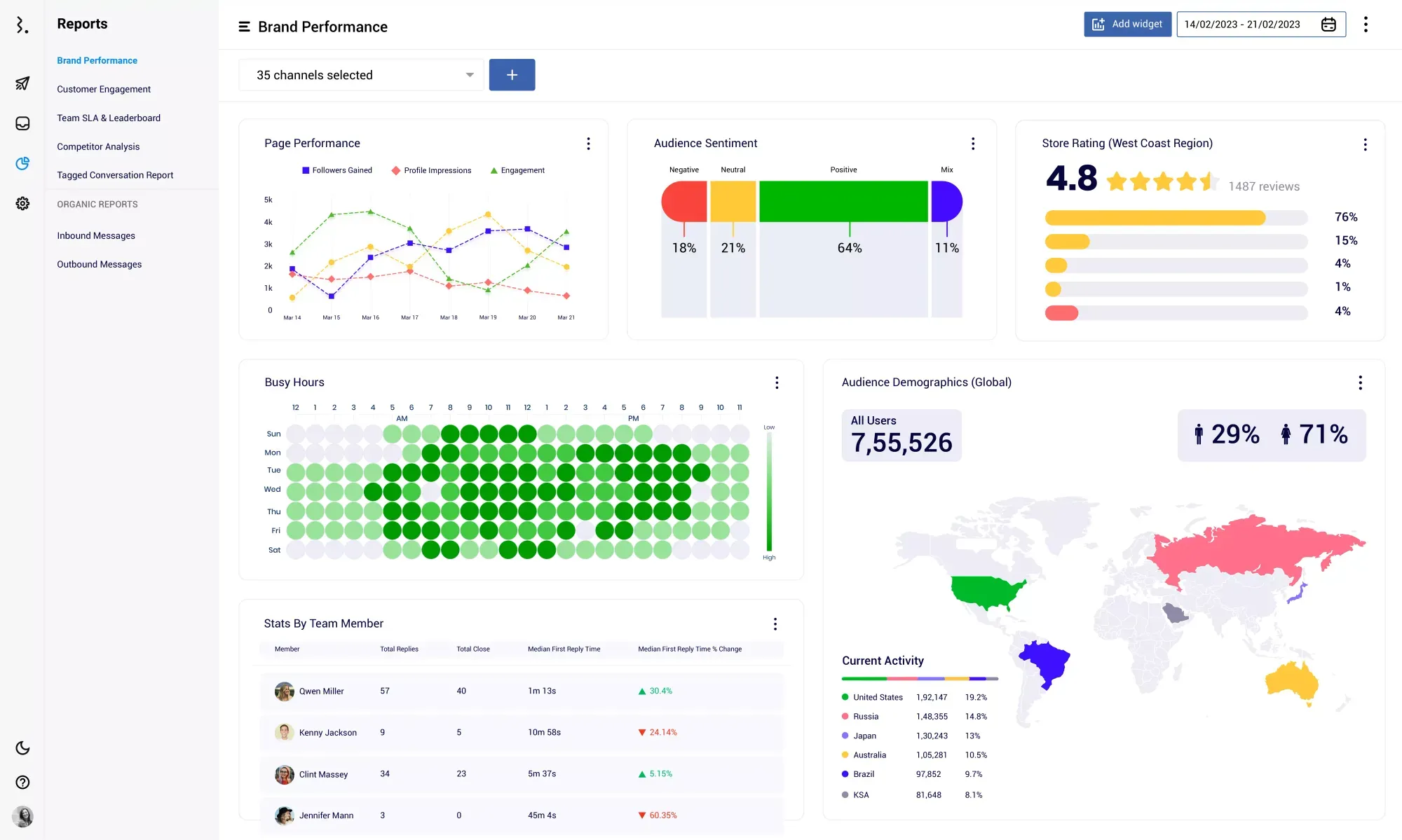
Understand Your Audience Better
Audience insights play a crucial role in determining engagement rate. Hence it's essential to have a deep understanding of your audience before devising social media content strategies. Statusbrew offers data on audience demographics and audience sentiment to precisely understand their preferences. Using these insights, you can create campaigns that resonate with them.
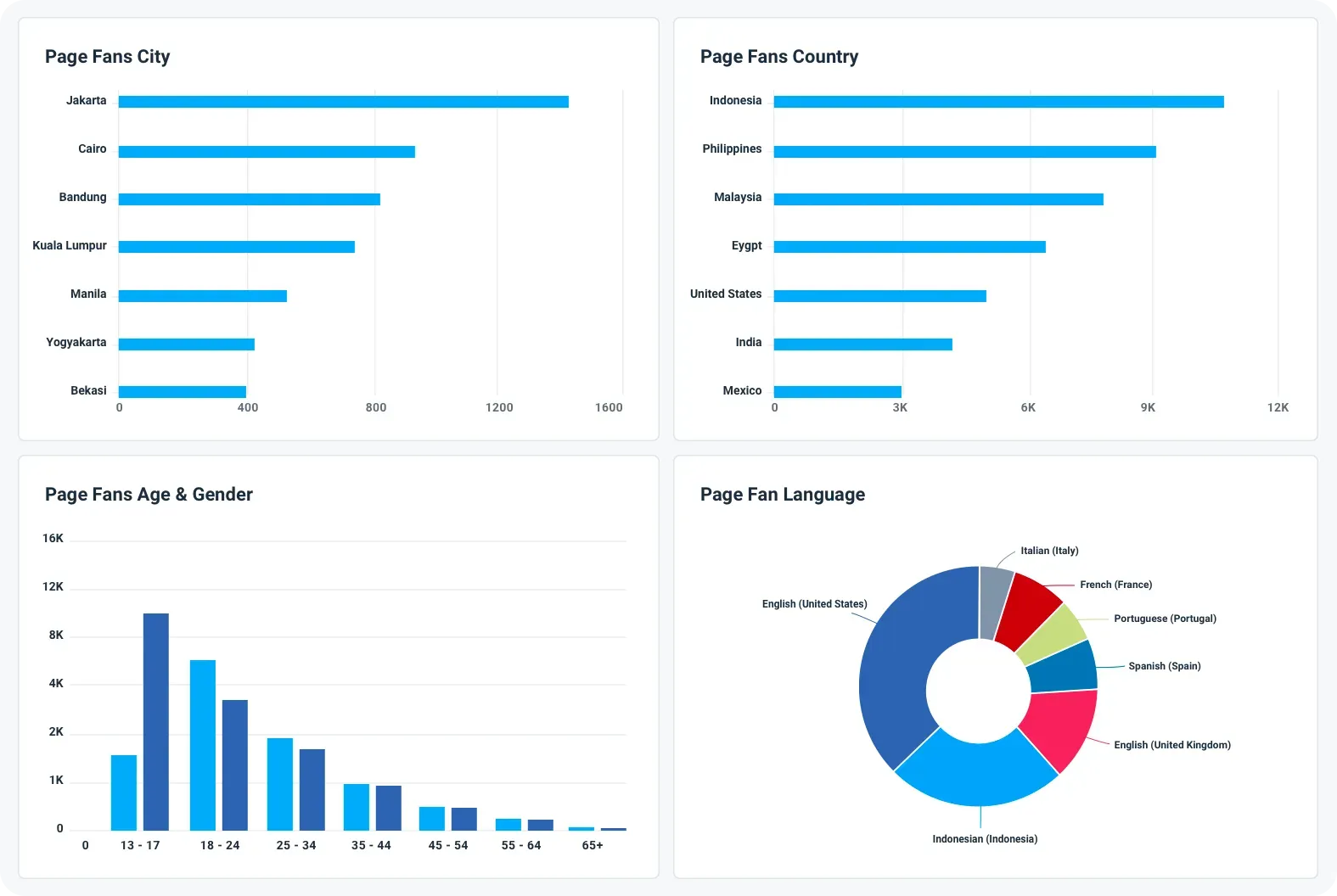
Analyze Post Performance In Detail
Statusbrew provides detailed data on how your strategies are performing across social media platforms. You can analyze post types, video views, repeat views, and identify posts that have the potential to be promoted for maximum impact. These insights help you to refine your content strategies and optimize engagement with your audience.
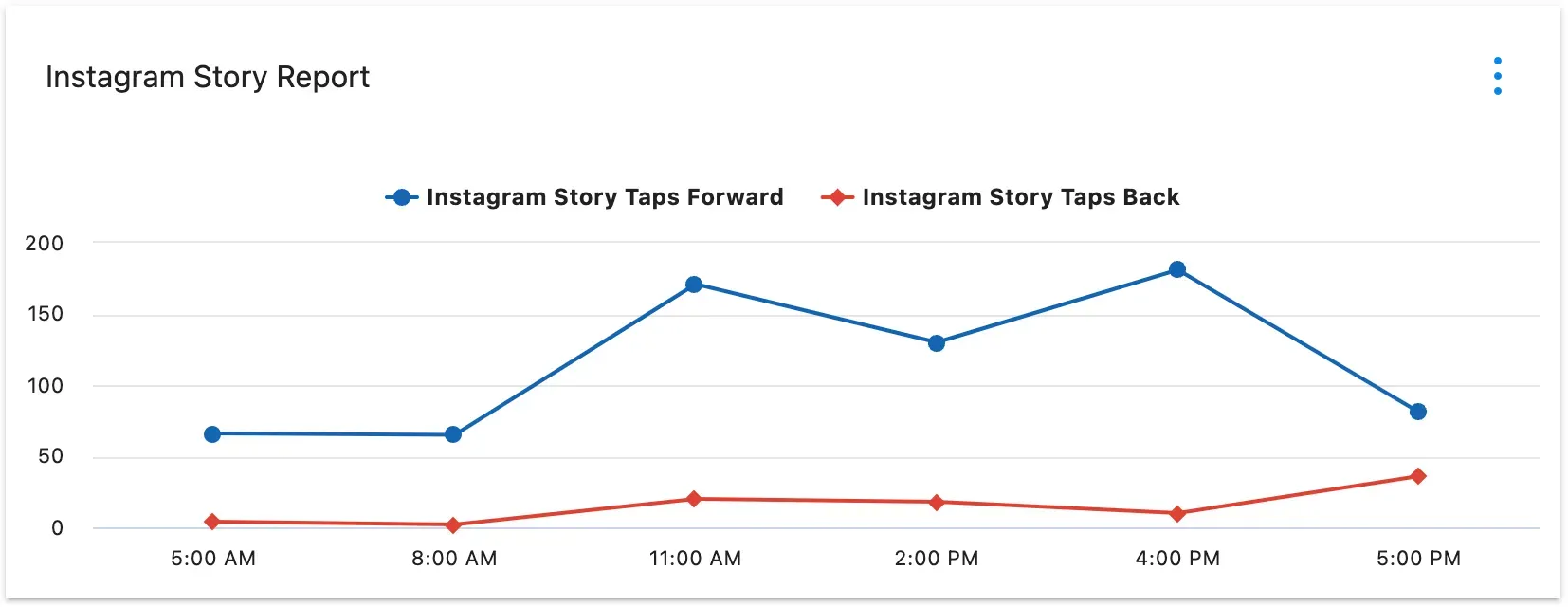
And there’s more to it..
TL;DR
- Easily view your overall post engagement rate and identify the types of posts that receive the highest engagement.
- Choose from 11 different visualizations to visualize the graph the way you want.
- Compare engagement rates over different time periods.
- Schedule automatic report generation and stay on top of your engagement metrics.
- Determine the best times to schedule your content for maximum engagement.
- Deep dive into your engagement rate using specific metrics for each social network.
- Create a competitors report to understand where you stand in comparison to your competitors.
- Easily compare and contrast data across customized timeframes to spot trends and measure progress.
- Access 15 pre-designed templates for network, brand, audience, topic, and team performance to save time and effort in creating reports.
- Share your reports easily using PDF, CSV, shareable links, and API support for seamless collaboration and communication with your stakeholders.
- Leverage advanced AI features like automated sentiment analysis, trend analysis, and spike detection to uncover valuable insights.
- Ensure the security and privacy of your data while adhering to industry standards and regulations with SOC Type 2 and GDPR compliance.
Book a free demo of Statusbrew to dive deep into your social media engagement rate and improve your strategy using data-driven insights.
Closing Note!
By understanding these formulas and metrics, you can accurately measure the level of audience engagement and make data-driven decisions to optimize your social media strategies.
Regularly monitoring and evaluating your engagement rate can help you identify trends, identify successful content, and make adjustments to enhance your social media presence. But, the engagement rate is just one piece of the puzzle. Analyzing and interpreting the data in the context of your goals, target audience, and overall social media strategy is equally important.
Track the performance of your content, identify trends, and uncover opportunities for growth and improvement with Statusbrew’s powerful analytics capabilities. Book a free demo today to understand how we can help.
Statusbrew is an all-in-one social media management tool that supports Facebook, Instagram, WhatsApp, Twitter, LinkedIn, YouTube, and even Google My Business.
FAQs (Frequently Asked Questions)
Here are some commonly asked questions on how to calculate social media engagement rate:
Why do you measure engagement rate?
Engagement rate allows you to gauge post performance, audience resonance, and communicate success regardless of follower count. It helps measure growth beyond just the number of followers.
Which social media has the best engagement rate?
The average organic engagement rate for brands on TikTok is the highest, around 17.5%.
What is the difference between engagement and engagement rate?
Engagement refers to the overall interaction and interaction actions taken by users on a social media post, such as likes, comments, shares, and clicks.
Engagement rate is a percentage that represents the level of interaction relative to the total number of followers or impressions.




Explore the Statusbrew range of social media tools
Cancel anytime!